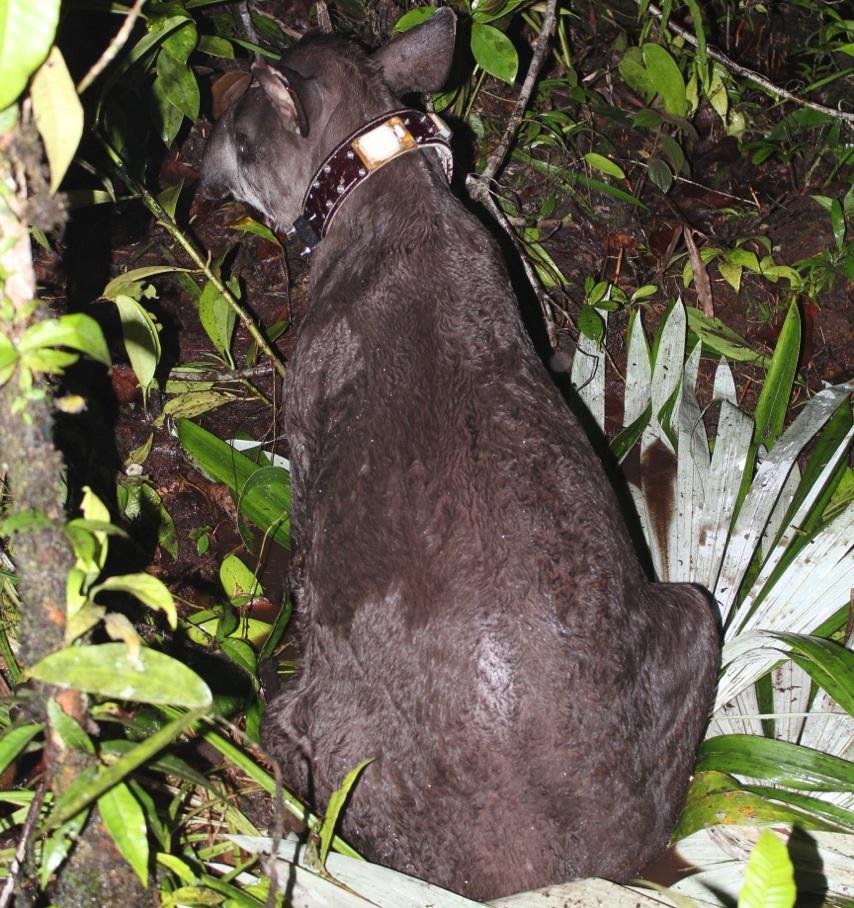Social media video featuring the project.
Jaime Andrés Cabrera
Other projects
8 Jan 2014
Influence of Saltlick Location on the Spatial Distribution and Habitat Use by the Lowland Tapir (Tapirus terrestris) in the Colombian Amazon
This project aims to understand how natural licks work (ecology) in the Colombian Amazon, and determine the effects of their use as hunting grounds by the indigenous people in order to develop sustainable use strategies.

Natural licks are sites found in habitats around the world which wildlife visit to consume mineral-rich soil. They are found in places as diverse as the African savannah, Asian woodland, to Amazonian rainforests. In the Amazon, indigenous people favour natural licks as hunting grounds, especially for hunting the large lowland tapir, which is a vulnerable and overexploited species, but also one that is preferred for bush-meat. Bush meat hunting is one of the major issues facing tropical forest conservation. Therefore, a better understanding of natural licks, the animals that use them, and sustainable management of people’s hunting practices at them will be important in helping to conserve Amazonian wildlife and the forests in which they live.
The growing pressures on the land from indigenous communities and their increasing integration into the western-style market are resulting in a dramatic change in their relationship with the environment and in an overexploitation of licks for hunting. This change is bound to continue unless scientists and conservationists focus their efforts to understand natural licks’ ecology on their role for the entire mammal community, taking human activity into account as part of their normal functioning; and then work closely with the local communities to achieve sustainable ways of use.
This project will take an interdisciplinary approach, and will combine research into the ecology of the wildlife that use natural licks (spatio-temporal animal use patterns and the ecological implications of these patterns) with an understanding of the indigenous people who use the licks for bush-meat hunting.
The first step will be to better understand the traditional ecological knowledge of indigenous people who use the licks. I will work closely with the indigenous communities living around Aduche and Nonuya Villazul Indigenous Reserves in the middle Caquetá river basin. Using unstructured interviews with elders from each community, I will study/record the perceptions and traditional uses of these sites, which have both practical and mystical significance to them. This will provide a foundation for indigenous communities and park staff to work together and co-manage areas in national parkland and across several indigenous reserves.
The project will also facilitate the transfer of knowledge about licks between elders and younger generations of the indigenous communities. Natural licks are extremely important within their culture and there is a huge amount of accumulated knowledge about the species that visit the licks as well as strict cultural rules about how hunting should be carried out at the licks. My previous work in the area has shown that younger members in the community do not always abide by the traditional customs transmitted by the elders or listen to their knowledge. As a consequence, the elders are looking for new ways to ensure their traditional knowledge and cultural norms survive. The project will organize activities in each community where the elders will be in charge of teaching younger people about the licks, the animals that use them, and the cultural norms for their use.